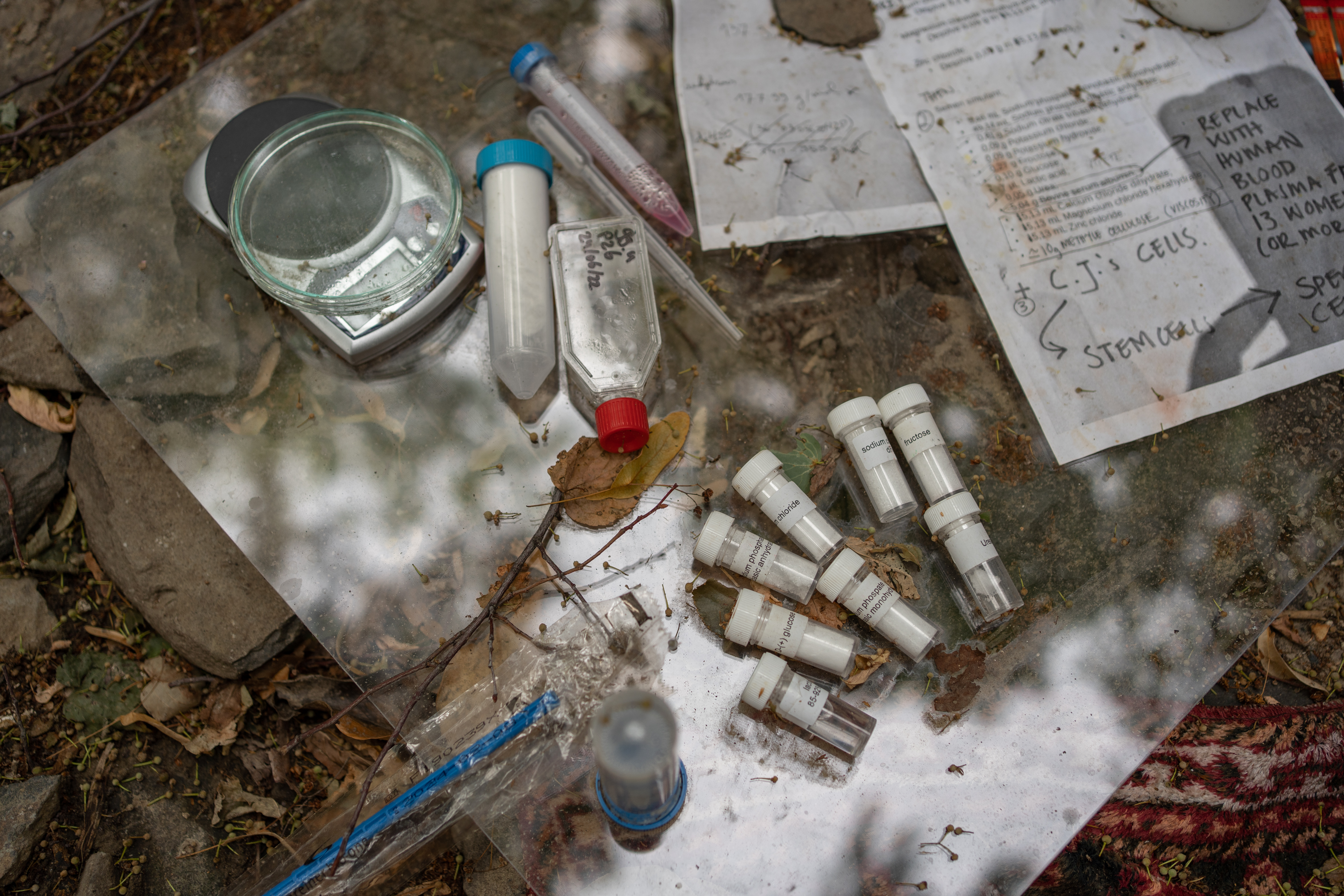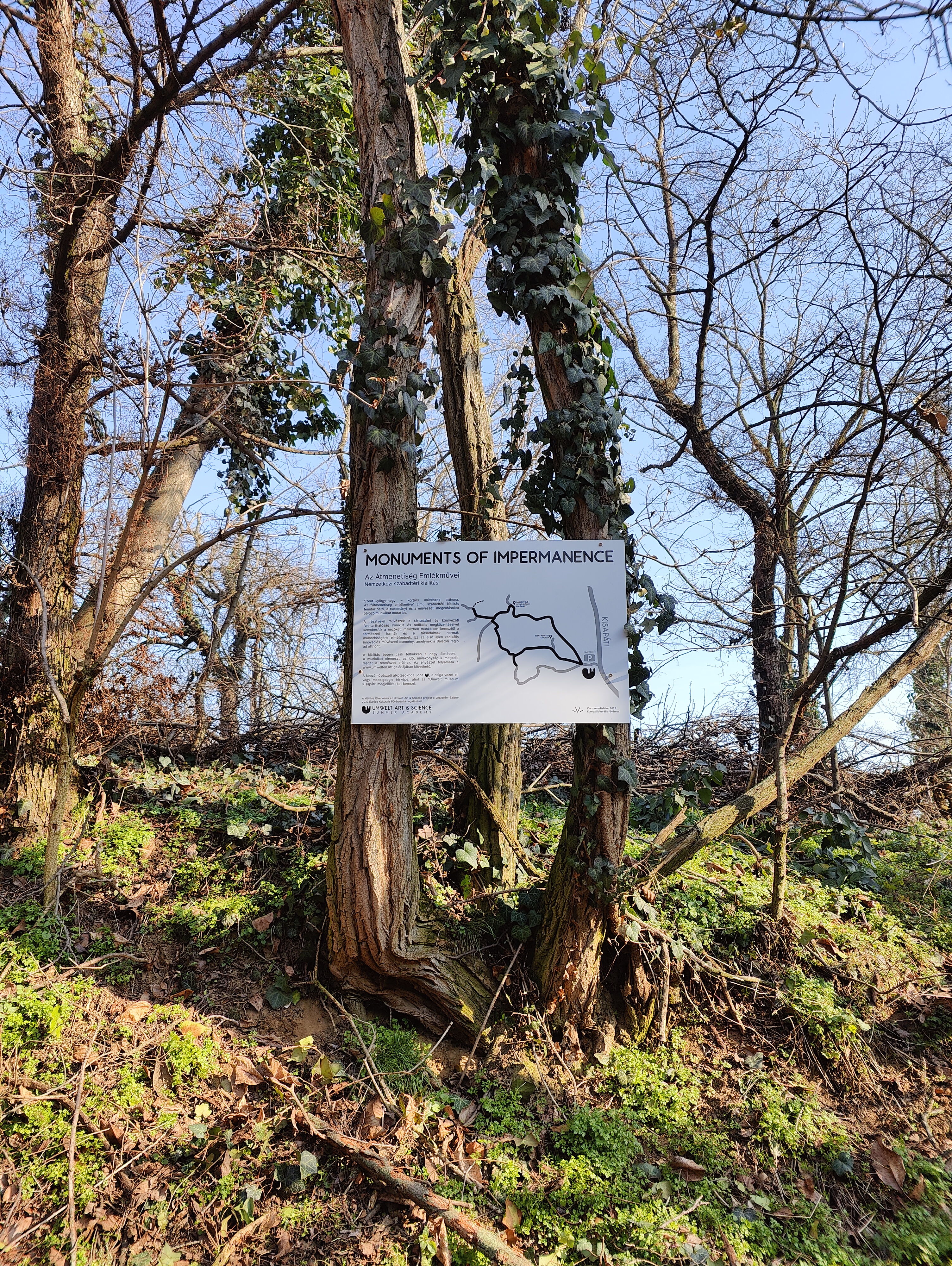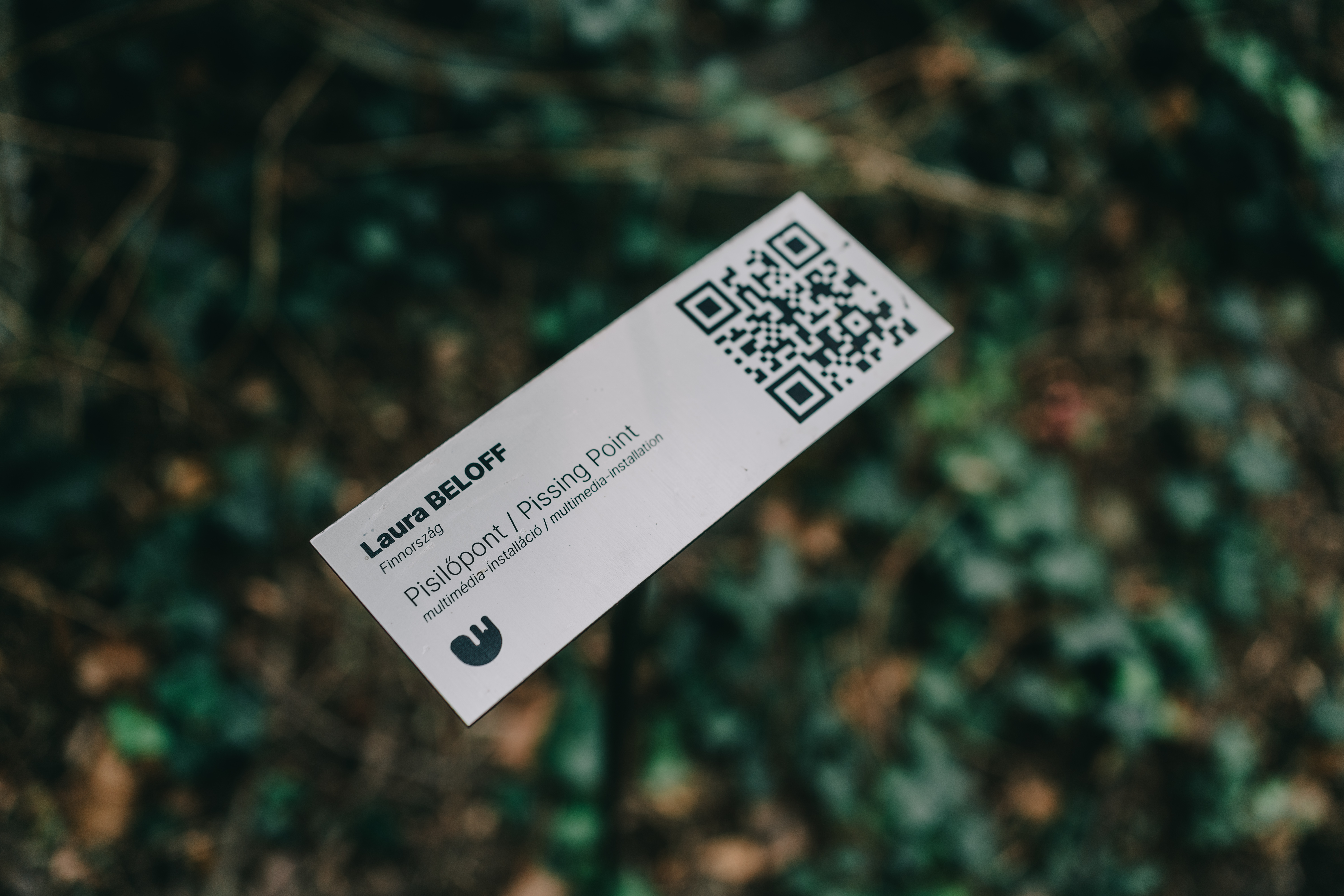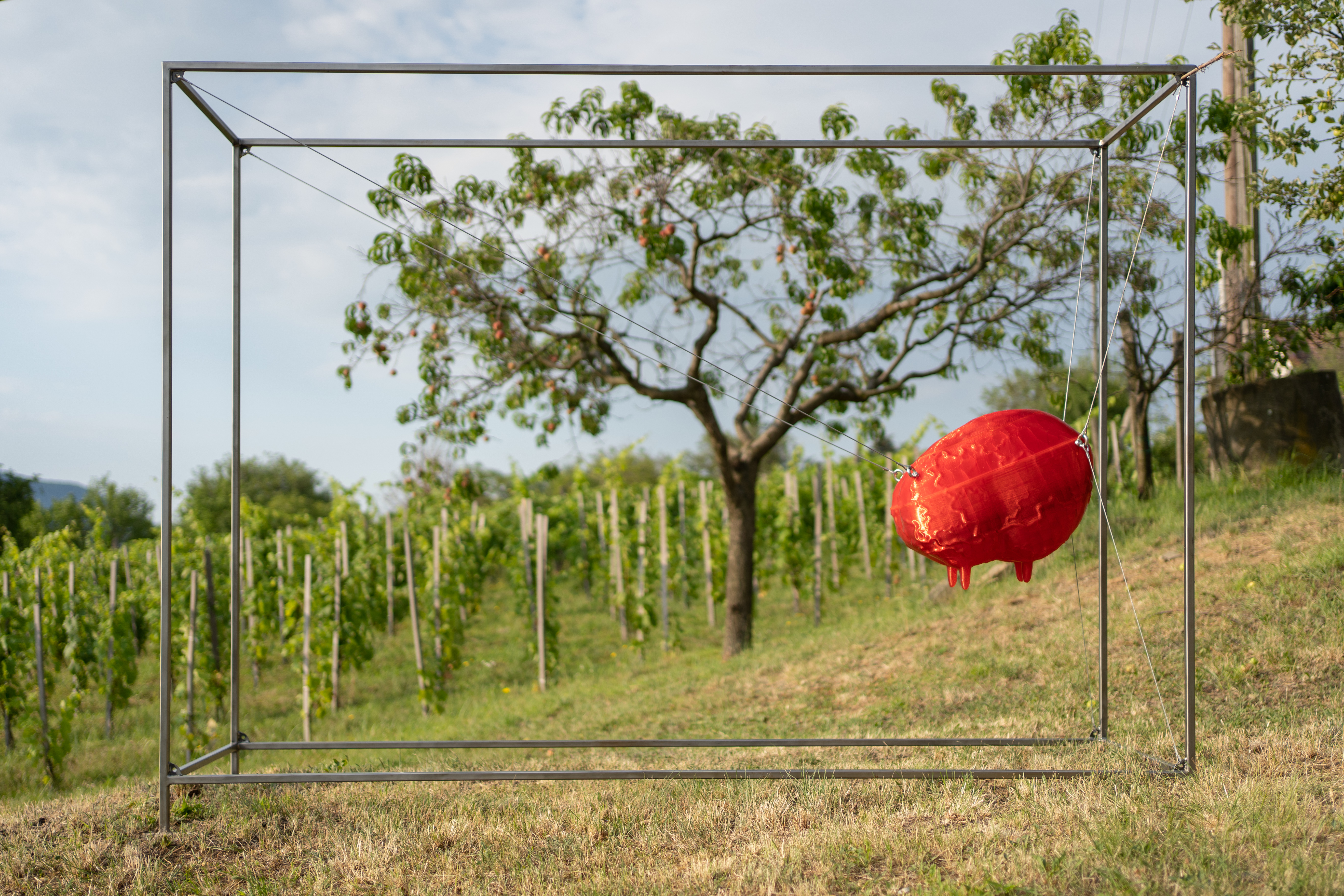Blogpost: Telling as it is through art and science.
In the summer of 2022 an open-air contemporary art exhibition opened to the public in rural Hungary. Located in a national park on a volcano Mount Saint George, near the lake Balaton, – a region which does not suffer from a lack of tourism, but perhaps is a tad short of much welcomed contemporary cultural events.
The framework of the exhibition was inspired by an early model of the now well established Pedvale Art Park, where sculptures, land art, and contemporary art installations were scattered across meadows, forests, valleys and uninhabited manor buildings, waiting to be discovered by the park’s visitors, without informative maps to guide them. An annual art residency would sprout new installations, surprising the visitors along the paths.
The exhibition in Hungary, titled “Monuments of Impermanence”, adopted the same approach, allowing its visitors to discover the artworks while having a walk on the volcano, with one major difference: the exhibited artworks are born from transdisciplinary weaving of art and sciences, philosophy, ecofeminism and design theory. Issues of environmental and social sustainability are at the very heart of the exhibition, told through the narratives of the works.

The exhibition is organised by the Institute of Advanced Design Studies as an experimental project “Umwelt Art & Science”, bringing together artists, designers and scientists who work with transdisciplinary approaches, particularly within the art and science field.

The pilot of this project hosts ten internationally acclaimed artists from Europe and Hungary in a short summer residency, in which the exhibited artworks are produced, and a year long free to attend open-air exhibition (July 2022 - June 2023). The exhibition is supported by the Veszprem Balaton European Capital of Culture 2023 grant program.

Identifying with the underlying meanings of artworks born in transdisciplinarity.
From an audience point of view, while a stone sculpture may not require deep search into its meaning aided with elaborate description by its author, artworks born in technological developments or scientific discoveries, or even theoretical research, often do. How do we aid the audience to interpret the meanings of such artworks, and help them to identify with the narratives and the relevance of the scientific or technological knowledge that has led to a given artistic result, and what might be learnt from it?
A common solution is to accompany artworks with descriptive instructions on what message may be acquired. This does not present difficulties if such artworks are in a gallery that accommodates the instructions on wall spaces, for instance, typical today for technology-forward exhibits. Away from borders of a gallery, in an open-air exhibition setting, the descriptions may be gated with QR codes, now increasingly popular in a variety of applications where large and multimedial information is made accessible by scanning the small dotted square. As several of the artworks in the “Monuments of Impermanence'' exhibition are multimedial works consisting of short films and soundscapes stored on the project’s website, the artworks are accompanied with QR code plates.

Here, an intriguing observation arises concerning the audience’s division of attention given to the physical installation and their intent to identify with its underlying narratives by reading the accompanying descriptions, in this case gated by the QR codes. In the exhibition, fewer viewers have scanned the codes to access the descriptions of the artworks, approximately 24% from estimated 2700 visitors on the exhibition route within six months. The audience seemed to have preferred following the exhibition’s website links to access the descriptions of these artworks, while on the route or other times (total 3000 page views in the same period). This may be a result of several indicators, such as visitors do not wish to use their smartphones while being in nature, or are unfamiliar or uncomfortable with the QR code technology; (or proportionally are less interested in the artworks and more in their walk in nature along the route of the exhibition). Nonetheless, without turning to informative descriptions, the audience’s intent to engage with the underlying narratives of the transdisciplinary artworks is limited to visible cues given by the use of technology or science elements within the work itself, or perhaps the narrative is made relatively explicit by the form of the artwork. In addition, these narratives play a role in making transparent the governing ideas and objectives of the exhibition, which then may be lost to the audience.

However, we do not necessarily need to seek a utilitarian angle to connect the audience with art. An open-air exhibition, whether in an urban area or a national park, provides a democratic platform where individuals have the freedom to determine the extent of interaction with the artworks, or to disregard them entirely. The experimental exhibition in Hungary, nevertheless, prompts intriguing considerations about connecting audiences with the kind of art that invites to engage and relate to the underlying stories, as these stories are integral, if not the most critical aspect, of the artwork itself. In addition, these stories help to bridge the art and science worlds, while promoting a better understanding of transdisciplinary works and their significance to a wider audience.
“Monuments of Impermanence” 2022 participating artists:
Laura Beloff (FI), Dezsű Renáta (HU), Fabricius Anna (HU), Horváth Gideon (HU), Charlotte Jarvis (UK), Simona Koch (DE/A), Lilla von Puttkamer (DE/HU), Süveges Rita (HU), Szalai Dániel (HU), Zilahi Anna (HU)
